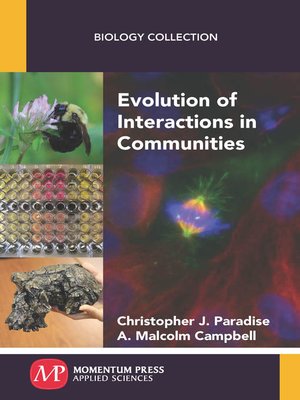
Sign up to save your library
With an OverDrive account, you can save your favorite libraries for at-a-glance information about availability. Find out more about OverDrive accounts.
Find this title in Libby, the library reading app by OverDrive.



Search for a digital library with this title
Title found at these libraries:
| Library Name | Distance |
|---|---|
| Loading... |
Pairwise and diffuse coevolution are defined, with examples that include mutualisms and predator-prey interactions. In any example of coevolution, the costs and benefits to both species involved in the interaction must be assessed in order to understand evolution of the interaction. Models to explain coral bleaching are examined in the context of a coevolutionary mutualism, as are the implications for the possible extinction of coral reefs. Data are examined in order to determine which model is best supported. Other examples of how evolution affects interactions and communities of organisms include adaptation to living in particular habitats and evolution to frequent and somewhat predictable disturbances. For the former, physiological adaptations possessed by some plants to live in low light conditions are described and assessed. Ecological disturbances are defined, and the role of disturbance on evolution of ecological systems is assessed through the use of data. Finally, how time and spatial scales affect disturbances and the evolutionary responses of organisms to disturbances are also examined.







